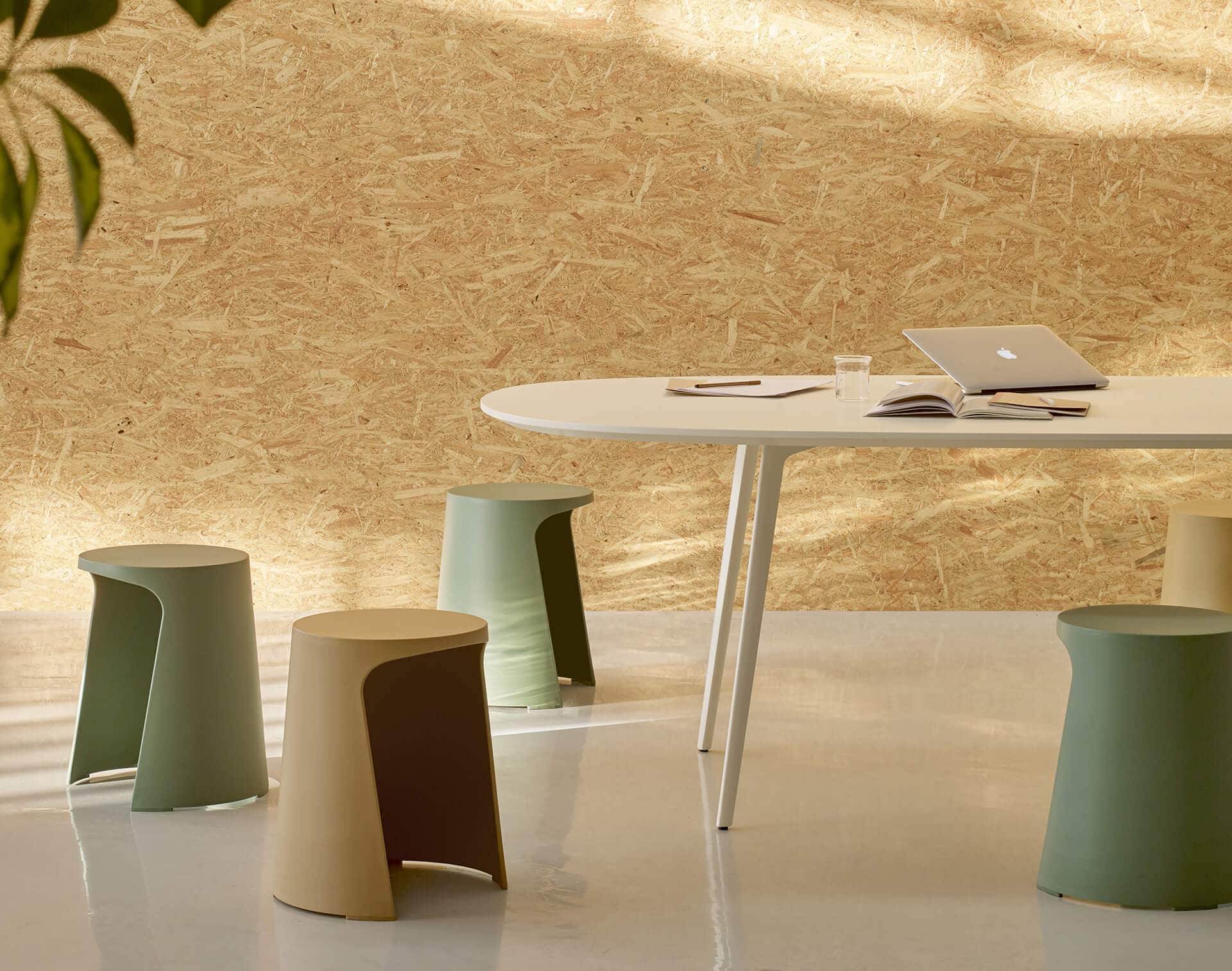Behind every artwork, film or product, there is always a history. Creative development is sometimes a lengthy process that focuses on inspiration, form and functionality. Every artist or designer has a unique approach to how a piece can take shape and injects personality into them to be the change they want to see. They become closer to us, part of us and establish a connection.
The Handy Stool is one of the newest pieces to join the Sellex product range. Stephen Philip, the designer behind the very versatile stool, shares his insights on how Handy came to be and takes us on a journey through the creative process.
What inspired you to create Handy?
In our fast moving, design and material conscious world, there is a growing need for user friendly, compact and versatile seating products. For Handy, I envisioned a refined, sculptural shape, with a lightweight and dynamic feel using a single material for the structure. As an industrial designer working at Arup, I used advanced structural modelling tools to optimise Handy’s structure, shape and materials. Above all, I wanted Handy to be a friendly product, one that’s easy for people to use in a range of environments.
How did the creative process unfold?
It started by talking to people, the potential users of Handy including our facilities management teams at Arup as well as a range of other people to understand their ‘wish-list’. From there, I sketched out some ideas on paper, refined them and then moved into 3D modelling to focus on the shape and sort the details such as glide size, edge shape for the seat pad and the geometry required to ensure it was easy to pick up and stack. Moving to the technical stage, the team carried out dynamic structural analysis to determine how the shape would perform when people sit and move within the seat. This provided 100% confidence that the materials and shape were optimised before the tooling process.
What function does Handy fulfil?
Handy is a simple, compact yet technically sophisticated product. It’s versatile and perfect for cafés, entertainment and conference spaces, hotels, shops or agile offices for quick, ad-hoc meetings at desks or break-out spaces. Because it stacks, it’s ideal for multi-purpose spaces that change from morning to night.
What materials were used to produce Handy?
The stool is manufactured in polypropylene to create a sculptural, functional product of value, intended to be used and cherished for a long time. The glides, which are intentionally wide to spread the load and protect the floor, are a slightly different material – polyethylene. These two components are mechanically fitted together instead of co-moulded, to ensure both materials can be separated, recycled or reused at end of the product life cycle. To minimise waste, we developed a version that uses recycled polypropylene. The seat pad allows people to customise Handy in a range of colours, fabrics and finishes to provide extra seat comfort and complements interiors, buildings and accessories to suit their environment.
What makes this stool different?
It’s a unique seat shape that stacks and offers the ability to play with the colour and material. Also, you can tuck your bag underneath, keeping your possessions safe and space tidy. Without the seat pad, Handy works well as a small table or stool.

